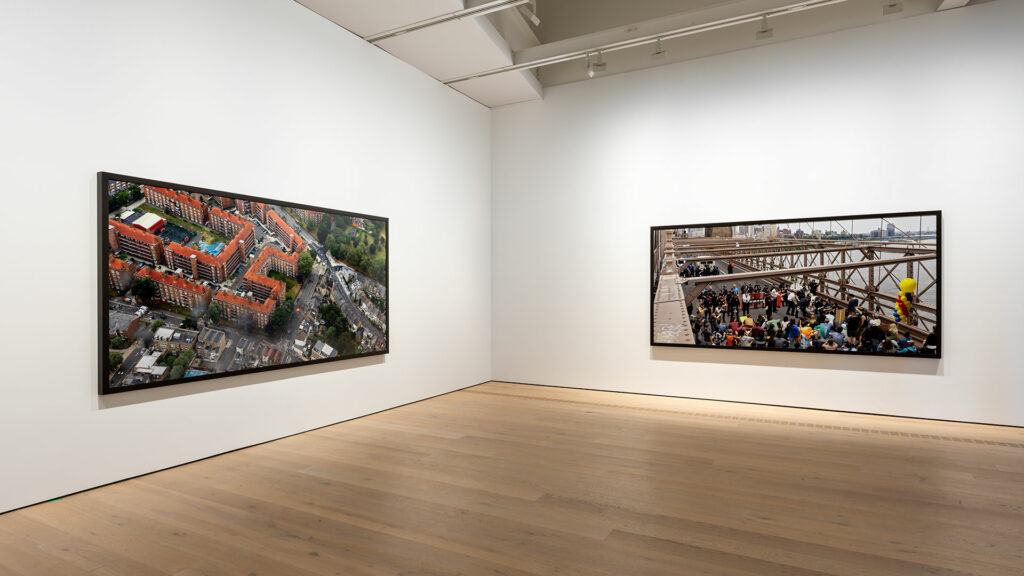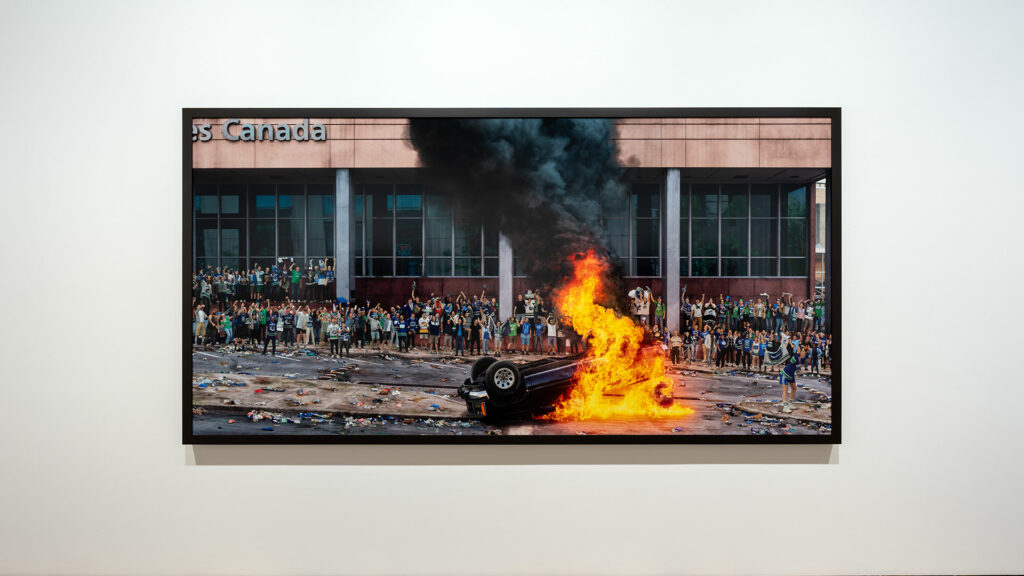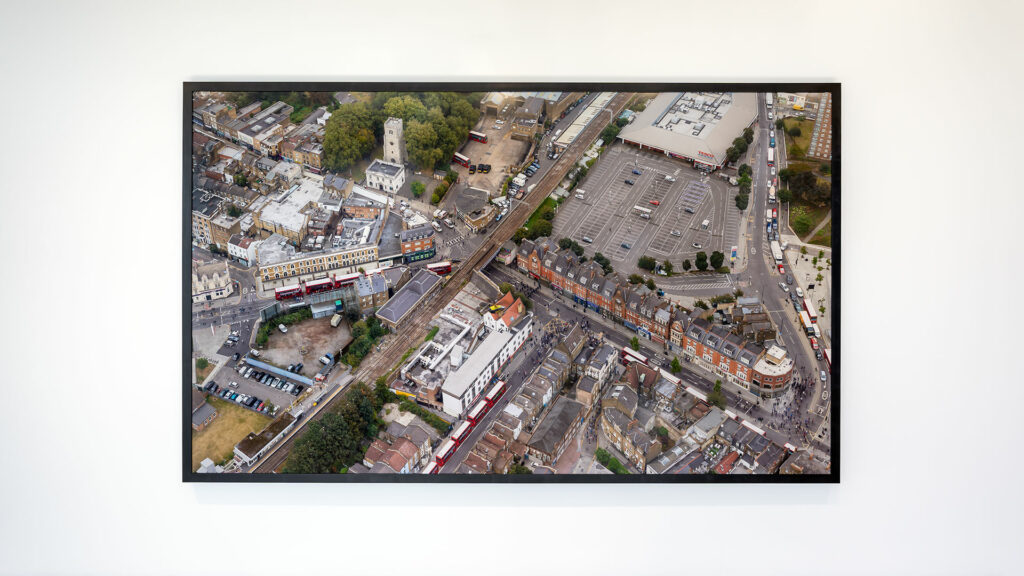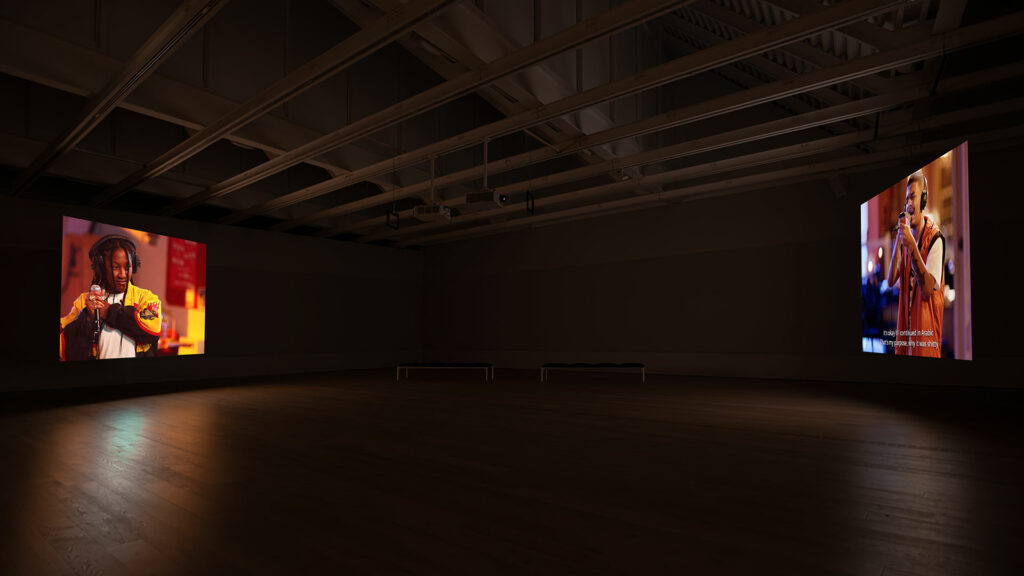Stan Douglas: 2011 ≠ 1848
September 9 –
November 6, 2022
On 15 June 2011, my Comparative Civilizations teacher in high school introduced our class to the work of Mark Rothko, showing us slide after slide of his alternately ominous and euphoric colour-field paintings. Convinced that I had detected precisely those “basic human emotions” Rothko sought to summon, the riot which ensued later that night in downtown Vancouver struck me, at the time, as a miserable contrast. Watching helicopter footage of hockey fans milling around torched cars, already bored by their acts of property damage, following the Canucks’ loss in the Stanley Cup final, couldn’t have been further, I felt, from Rothko’s artistic vision, with its quasi-medieval penchant for doom. Over and above whatever puerile moral judgements I then held toward the riot, the switch from postwar abstract expressionism to 21st century spectacle laid bare not so much a contradiction as a non-relation, a chasm or discontinuity between otherwise coeval phenomena.
Stan Douglas’s solo exhibition 2011 ≠ 1848 at the Polygon Gallery in North Vancouver—the Canadian premier of his show at the 59th Venice Biennale—is similarly concerned with the experience of historical discontinuity. At its centre, 2011 ≠ 1848 features a series of panoramic images of delicately reconstructed protests and rebellions that rippled across the world in 2011, such as the London riots, the Arab Spring and Vancouver’s own Stanley Cup riot. Meanwhile, the two-channel video installation ISDN (2022) presents a collaboration between rappers in London and Cairo as they trade beats and lyrics. Taken together, 2011 ≠ 1848 shows Douglas testing the visual art viewer’s capacity to think solidarity and rupture at one and the same time. With mathematical simplicity, then, Douglas addresses the ways in which non-relation shapes his work’s mimetic restaging of historical events as well as our experience of global crisis.
Given his commitment to historical detail alongside his exhibition’s reference to 1848, I have a hunch that Douglas is a covert reader of Marxist literary critic Georg Lukács. For instance, 1848 is as important to Lukács’ theory of the historical novel as it is to Douglas’s production of historical photographs. “[H]ere for the first time the proletariat enters upon the world-historical stage as an armed mass, resolved upon the final struggle,” Lukács observes, but so too “the bourgeoisie for the first time fights for the naked continuance of its economic and political rule.”[1]The hitherto unthinkable magnitude of revolution in 1848 makes available “the mass experience of history itself, with an experience shared by the widest circles of bourgeois society, by those even who were not in the least interested in the science of history or aware that a change had taken place within it,”[2] as Lukács writes. For Lukács, the historical novel’s capture of everyday life amidst rapid upheaval exemplifies how this new form of consciousness is felt, communicated and negotiated. As a consummate producer of historical art in his own right, Douglas adopts this same attention to the real and material yet recognizes that, in the 21st century, mass experience—or class consciousness—now constellates across space and time in wholly different ways. 2011 ≠ 1848 asks: what kinds of revolutionary histories are available to critical practices of re-enactment in the present?
Consider Douglas’s London photographs. The London riots of 2011 erupted in response to the police shooting dead a 29-year-old British black man Mark Duggan, while its deeper roots lay within the ongoing structures of austerity, anti-blackness and carcerality that govern contemporary British life. London, 9 August 2011 (Pembury Estate) (2017) and London, 9 August 2011 (Mare Street) (2017) are constructed assemblages of aerial news reports and still images covering the August uprising alongside Douglas’s own use of helicopter-mounted photography. The clashing protestors and police officers are actors Douglas directed; the built environment represents another elaborate fiction, because of continuous urban renewal projects between 2011 and 2017, Douglas was required to visually restore, or disguise, these two neighbourhoods so they would reflect their pre-gentrification state. A Tesco supermarket and its adjoining parking lot dominate the pictorial field of London, 9 August 2011 (Mare Street) with the nearby bumper-to-bumper traffic momentarily drawing the eye down toward the rioters gathered at the T-intersection in the bottom right. I say momentarily because this photograph’s considerable size and copious detail keeps the eye adrift. I find myself studying odd minutiae: the HVAC on various roofs, the cement truck in the traffic jam (forecasting the redevelopment plans?), and the bus whose advertisement for fried chicken doubles as a political slogan, “get stuffed!” Douglas’s mise-en-scène does not present us with the riot’s street-level action but rather with the spatial discontinuities in which such activity takes shape. The riot is potent but patchy; consider the people waiting on the train platform seemingly oblivious to the officer-protestor confrontation, occurring a few blocks away. Police helicopters hover in both of Douglas’s London photographs—here it’s almost dead centre—drawing into focus the competing, or shared, visual logics that underlie the representation and surveillance of insurrection.
Vancouver, 15 June 2011 (2021) completely lacks a police presence, featuring instead hockey fans clamouring around an upside-down pickup truck set aflame, cantilevered by a dumpster. At the crowd’s back looms the columns and inky glass of the 2011-era Canada Post building, since renovated for the new Vancouver office of Amazon. Pepsi cans, Tim Hortons cups, rags and splatters of food and drink coat the street in careful simulacra of the Canucks jersey colour palette. In Douglas’s volcanic photograph, the Vancouver riot represents an ephemeral but nevertheless collective fulfillment of getting stuff. It’s a celebratory image, having visual asymmetry with the London Riots and Occupy, which is intended to provoke. Situated among these other rebellions, Douglas argues for the political content of the Stanley Cup riot—a visceral reaction to the city’s widespread housing crisis, a delayed response to the 2008 financial crash[3]—thereby emphasizing its synergy with the broader social upheavals of 2011, particularly as a way to reconfigure and reclaim urban space. Indeed, the whole photographic component of 2011 ≠ 1848 asserts the centrality of the street within our cognitive maps of revolution; the different articulations of scale, perspective and foci within these images all coalesce around the road as both ambient background and mustering point, battleground and brick supply.
If Douglas’s photographs ask us to contemplate difference and synchrony across numerous images, ISDN distills this representational dilemma into a single work. One screen features grime artists TrueMendous and LadySanity in London, the other Mahraganat lyricists Raptor and Youssef Joker in Cairo; at one point the camera floats out of their respective studios, panning across Cairo tinted in the blue hour before sunrise, and London cloaked in tower block shadows and streetlights.[4] ISDN probes this spatiotemporal split sonically and visually. The performance is collaborative and continuous, with the typically occluded aspects of filmed music performances retained in the work’s two-channel structure: LadySanity bobs her head while Youssef Joker sings. We experience the track as a cohesive whole yet the screens keep these musicians apart. ISDN’s dual emphasis on simultaneity and distance links back to Douglas’s synoptic portrayal of 2011; here, music collaborations are broadly consonant with political revolt, both of which Douglas represents as intensely social acts embedded within a discontinuous urban fabric. Douglas stages non-relation as something like a precondition for his historical and combinatory art, whereby the disjecta membra of the social totality are ultimately sharpened into the contradictions and real relations that mediate collective experience. This exhibition, which takes the just past of world revolution for its subject-matter, is less an acknowledgement of defeat than a concrete analysis of crisis in our own time. So, 2011 ≠ 1848, but also, 2022 ≠ 2011.
Sam Weselowski is a poet from Vancouver, unceded xʷməθkʷəy̓əm (Musqueam), Sḵwx̱wú7mesh (Squamish), and səlilwətaɬ (Tsleil-Waututh). His chapbooks include Love Poems <3 (Distance No Object, 2021), Other Than North (Gong Farm, 2021) and I LOVE MY JOB (If a Leaf Falls Press, 2019). He lives in the West Midlands, UK.
[1] Georg Lukács, The Historical Novel (New York: Penguin, 1969), 202.
[2] Idem. Page 204.
[3] See Douglas’s recent comments in Esse and Artforum.
[4] Grime is a genre of electronic music that emerged in the UK during the early 2000s, incorporating elements of jungle, garage and hip hop. Originating in Egypt, Mahraganat combines EDM, hip hop and traditional Egyptian folksongs, particularly Shaabi, a form of popular working class music.












